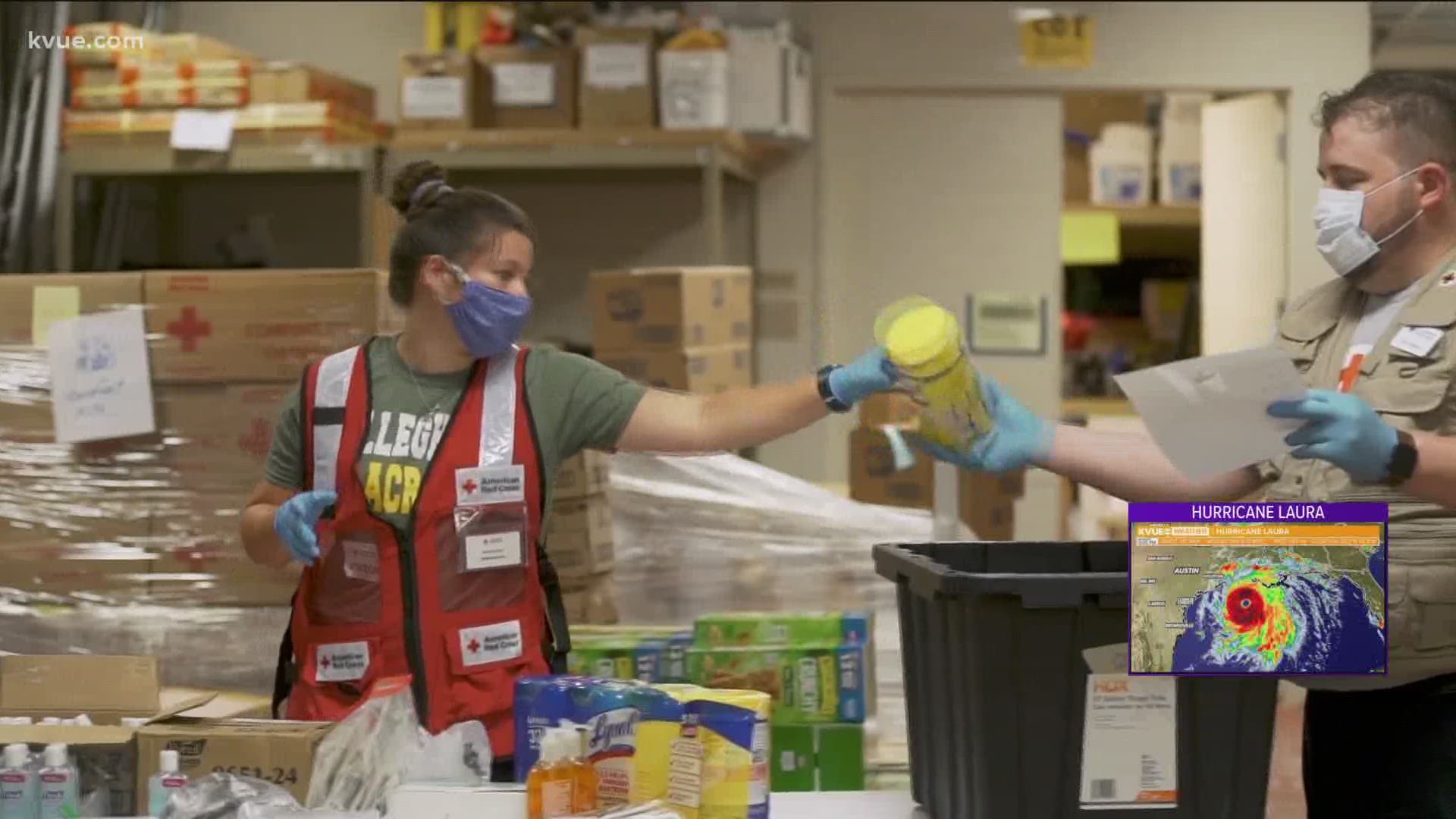AUSTIN, Texas — Austin, Travis County, Williamson County and Hays County activated the Capital Area Shelter Hub plan on Tuesday, preparing for up to 3,000 evacuees to arrive from Galveston.
The coastal city issued a mandatory evacuation in anticipation of Hurricane Laura.
Emergency planners designated the Circuit of the Americas as the reception center where all the evacuees must first go when they arrive to Austin so they can register. American Red Cross volunteers are helping to register the evacuees as they arrive, then telling them which hotels to go to.
The City of Austin recognizes the nonprofit's role in its response to the evacuation and knows this undertaking cannot be done with them – but now the group itself is in need, asking the community for help.
American Red Cross volunteers wear many hats, from stocking up on food and other essentials to forecasting the weather. They all have different roles as they prepare for Hurricane Laura threatening the Gulf Coast.
Meteorologist Richard McAlister lets the nonprofit know what to expect from the storm.
"It's something I've never seen before," he said.
McAlister said it's a complex forecast that has made getting ready for the storms harder as well.
"There are the challenges associated with moving people and equipment. And we have to do all of this on a timetable that varies according to the track and the speed of the storm," he said.
On top of that, the COVID-19 pandemic has taken a toll on the nonprofit. Because of it, they have fewer volunteers than usual.
"Some people simply cannot volunteer right now because they have preexisting health conditions," said Marty McKellips, the regional chief executive for the American Red Cross that covers Austin.
McKellips said the nonprofit needs 700 people to cover the Austin region.
"We normally have about 70% of our responders on the ground and 30% virtual. Now it's kind of reversed. So, we only have the minimum that we need to keep things running on the ground," she said.
McKellips also said because of COVID-19, costs are up – at a time when donor dollars are down.
"We don't want to cram people into small spaces, shelter space. We need to do things virtually. So, we've had to upgrade our technology. So, it's a little more expensive to respond in this environment than we normally do, so we are going to be looking for support," she said.
If you would like to volunteer or donate, click here.
PEOPLE ARE ALSO READING:

